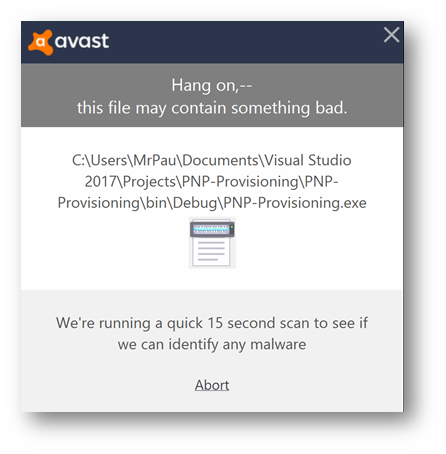- Part 1 – Getting the Tenant
- Part 2 – Create Users from CSV file
- Part 3 – Set User Photos in Exchange Online
- Part 4 – Upload User photos to SharePoint / Set User Profile Photos
- Part 5 – Turn on O365 Auditing
- Part 6 – Set up SharePoint Tenant – (This post)
Introduction
In this series of posts, I will explain how you can set up a Development O365 Tenant quickly. Using PowerShell scripts, at the end of this process, you will have:
- A O365 Development Tenant with 25 “DEVELOPERPACK” Licenses.
- 25 Users assigned with license
-
A total of 274 Users added to the Tenant
- Set up for multiple offices
- Organisational structured
- All users will be MFA enabled
- All users will have photos added to their accounts
- Enabling Office 365 Auditing
- Setting up the SharePoint Tenant Settings and enabling Public CDN for SPFX
Unfortunately, I have found it impossible to do the following via PowerShell scripts, and these would need to be done manually. I haven’t included this information within these blog post.
- Create a Tenant App Catalog
- Set Organisation Details
- Set Login Branding
- Set Tenant Branding
Obtaining the code
I have stored my code on GitHub at the following URL for cloning. https://github.com/pmatthews05/SetupDevTenant.git
Setting up the SharePoint Tenant
SharePoint Tenant has many different settings. Here my script is just calling the PNP powershell command Set-PnPTenant. More information about each setting can be found here. https://docs.microsoft.com/en-us/powershell/module/sharepoint-pnp/set-pnptenant?view=sharepoint-ps
If you already have a SharePoint tenant that you want to have exact same settings on your environment, you just need to go to that tenant, sign into the SharePoint admin URL with PNP, and then run
Get-PnPTenant | ConvertTo-Json > .\othertenant.json
This will output a json file that will read in with my script, but you will need to add the following to “PublicCdnOrigins” and sets PublicCdnEnabled to True. as it never reads this in with this command.
“PublicCdnEnabled”: true,
“PublicCdnOrigins”: [
“*/MASTERPAGE”,
“*/STYLE LIBRARY”,
“*/CLIENTSIDEASSETS”
]
Inside the Settings folder, you will find a pre-configured SPTenantSettings.json file. I have put all the parameters in alphabetical order to make it easier to read. This is a typical setup I use, but it probably isn’t what you want. Especially around Sharing. I don’t allow sharing to anonymous users (SharingCapability). I also set Direct default sharing link (DefaultSharingLinkType).
To run this script you first need to connect to the admin site, using Connect-PnPOnline.
Connect-PnPOnline -url:https://[tenant]-admin.sharepoint.com -useweblogin
Now you are connected, you can call the Set-SharePointTenant.ps1 file.
.\Set-SharePointTenant.ps1 -SettingsPath:'.\settings\SPTenantSettings.json'
There are two settings that will require a confirmation that for some reason cannot be pre applied in PowerShell. These settings are OneDriveForGuestsEnabled and OrphanedPersonalSitesRetentionPeriod.


If you are running the template I provided, once the script has finished running your Public CDN will also be turned on.

Using PowerShell, type the following and you will see that the configuration is pending. This takes up to 15 minutes before it is fully enabled. You can keep calling the below command until it no longer says Configuration Pending.
Get-PnPTenantCdnOrigin –CdnType Public

Intune and Azure Directory Premium
In lines 84-86 of Set-SharePointTenant.ps1 there are 3 settings that I have commented out (ConditionalAccessPolicy, AllowDownloadingNonWebViewableFiles and AllowEditing). These settings require Intune and Azure Active Directory Premium subscription. As this is a development tenant, there is no need to set these settings.
I hope you have found this series useful and are able to setup within a couple of days due to Microsoft back end processes a SharePoint Development tenant that you can work with. I am more than happy for anyone to help expand/improve on my GitHub project.





















































